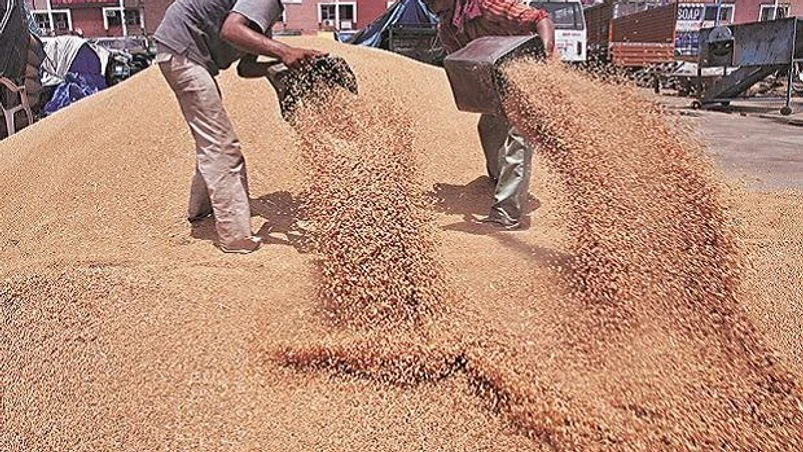 What does dwindling central wheat stock mean for prices and production?
What does dwindling central wheat stock mean for prices and production?
The wheat stocks in the Central pool have dropped close to the minimum required levels because of lower procurements. What does this mean for the grain's prices and production?
Krishna Veera Vanamali New Delhi
)
As global wheat prices scaled record highs this year, in part due to the Russia-Ukraine war, bread-makers in India turned to multiple price increases. Today, a loaf of sliced brown bread costs Rs 50 while multi-grain bread costs Rs 65.
This is set to go up further.
India’s wheat stock in the central pool has fallen to barely over the buffer norms.
The Food Corporation of India, which maintains stocks of wheat and rice in the central pool, is required to maintain a minimum quantity of the grains at the beginning of each quarter to take care of operational requirements and exigencies at any point of time.
For wheat, this number is 27.58 million tonnes for the July-September three-month period.
Latest data shows that the stocks of the cereal maintained by India’s central grain procurement agency, as of July 1, are 28.51 million tonnes.
This is due to the fall in procurement by Food Corporation of India and a decline in production in the 2021-22 crop marketing year.
Usually, July 1 sees the peak stock levels as maximum wheat is procured in April, May and June.
The last time wheat stocks in the central pool were lower than this, on July 1, was back in 2008.
More From This Section
In FY23 so far, the FCI has spent Rs 37,852 crore to procure 18.78 million tonnes of wheat, down nearly 59% from the same period last year. The procurement target has been revised downward to 19.5 million tonnes from the earlier 44.4 million tonnes.
Last year, the government spent Rs 85,600 crore buying a record 43.34 million tonnes of wheat from farmers.
This time, farmers chose to sell their wheat crop to private traders, who offered prices higher than the Minimum Support Price.
Lower purchases by FCI, in turn, mean big savings.
Another reason for lower procurement is the drop in wheat production due to a sudden rise in temperatures in mid-March.
Wheat production in the 2021-22 crop season ended June has been estimated at 106.41 million tonnes, according to the third advance estimates.
The government had initially forecast this year’s wheat output at a record 111.32 million tonnes.
Harsh Wardhan, Fellow, ICRIER, says prices will go up as FCI will not conduct any open market sales. Millers will have to buy from traders at inflated prices and there will be higher production and procurement next year. Selective exports will continue, he says.
With the heat wave curtailing output and pushing domestic prices to record highs, the government banned most wheat exports from mid-May. It also reduced the allocation of wheat in PM Garib Kalyan Yojana and the National Food Security Act.
The reduced wheat quota will be made up for with rice, to manage the dwindling central wheat inventories.
The FCI is also not expected to conduct any open market sales this year, putting pressure on domestic prices.
With wheat being a rabi crop, the next harvest is a long time away. The fallout from global and local factors means, there is no relief on the horizon for consumers.
Also Read
Don't miss the most important news and views of the day. Get them on our Telegram channel
First Published: Jul 18 2022 | 7:00 AM IST

